
10 Most Historic Small Towns to Visit on the Atlantic Coast
The Atlantic coastline of the United States is home to some of the oldest towns founded by early colonists, making it the perfect region for any history lover to explore. While many might gravitate toward large cities like Boston or Philadelphia for their historical fix, numerous charming small towns along the Atlantic coast offer equally compelling and rich histories. From the Spanish roots of St. Augustine, Florida, to the antebellum charm of Beaufort, South Carolina, and the maritime heritage of Mystic, Connecticut, these towns each tell a unique story that brings American history to life.
St. Augustine, Florida
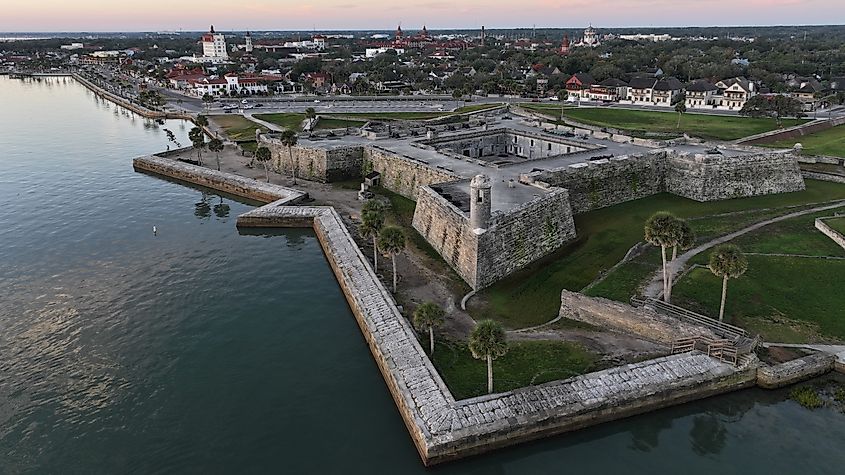
St. Augustine, Florida, is the oldest continuously inhabited town in the continental U.S. It was founded by Spain in 1565 as a colonial fort/outpost and has blossomed into a delightful Floridian town. Visit the Castillo de San Marcos, a 17th-century Spanish stone fortress that brings the past alive with reenactments and exhibits, and learn about early colonial practice in Florida. Or, wander historic St. George Street, a pedestrian-only thoroughfare lined with historic buildings of different architectural styles, shops, and delectable restaurants. Don’t miss strolling the campus of Flagler College, which was formerly the Ponce de Leon Hotel and a gem of Spanish Renaissance architecture. If this isn’t enough, enthusiasts can take a learning approach at the Villa Zorayda Museum. It houses antiques and features architecture inspired by the 12th-century Moorish style, speaking to the town’s deep Spanish roots.
Beaufort, South Carolina
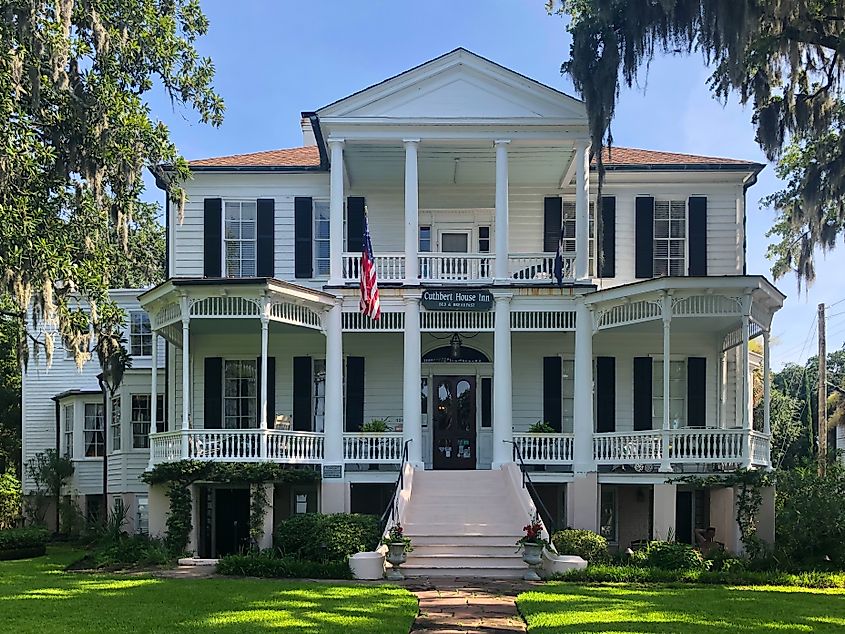
Beaufort, pronounced BEW-fort, South Carolina, is a prime example of the antebellum South, or the South before the Civil War. Sporting classic southern architecture throughout its historic district, known as the Old Point, you can see airy white plantation-style houses among trees with Spanish moss along the Beaufort River. Visit the Henry C. Chambers Waterfront Park to enjoy tranquil river views, incredible sunsets, and live music during special occasions. Beaufort’s history museum is aptly homed in a former arsenal, and you can visit the Harriet Tubman Monument just a few blocks away. Beaufort’s downtown is also very walkable, with a feeling as if history comes alive at every footfall.
Williamsburg, Virginia
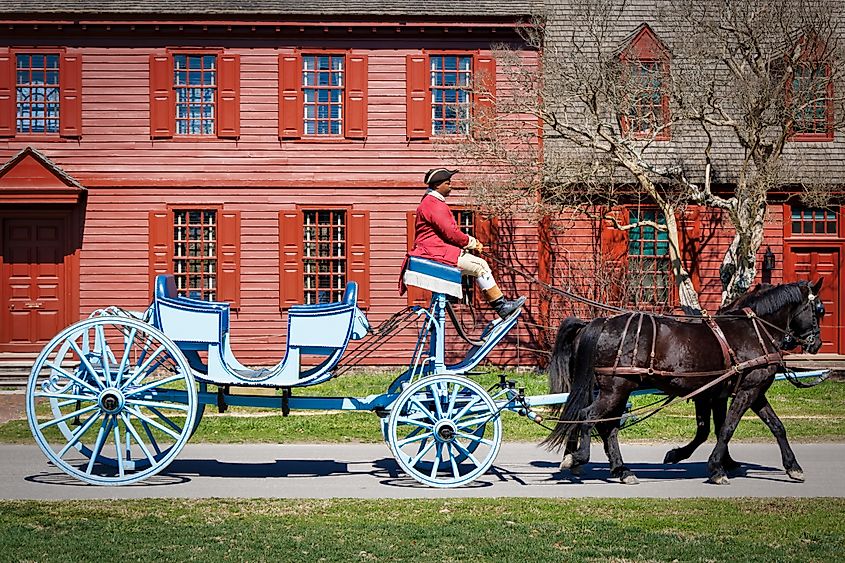
Williamsburg, Virginia, might have been one of the first towns to come to mind when reading this article’s title- and for good reason. Home to Colonial Williamsburg, one of the nation’s premier living history museums, people can stroll the grounds and see colonists going about their 18th-century lives, from agriculture to smithing technique to even rifle mustering. The buildings themselves are gems of federal architecture as well. Stop by the Governor’s Palace to see a reconstruction of the residence of the Virginia Colony’s governor, with costumed docents ready to explain every aspect of colonial life. Another building well worth viewing is the Bruton Parish Church, a historic Episcopal church that dates as far back as the 17th century- marvel at the beauty of its interior and then step outside to its neighboring cemetery to see many historical headstones.
Annapolis, Maryland
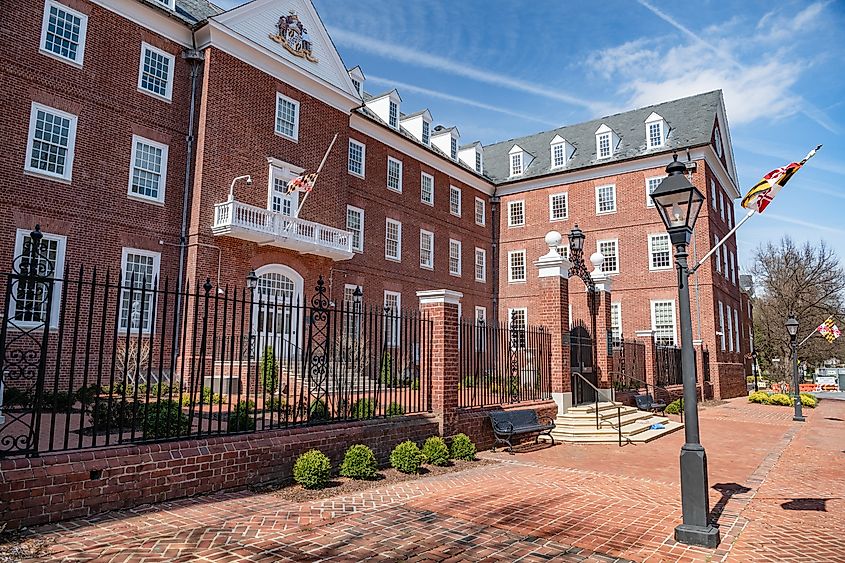
One of the oldest cities in the U.S., Annapolis is Maryland’s capital, rich with maritime and naval history and some stunning examples of colonial architecture. One can’t name Annapolis without mentioning the U.S. Naval Academy, which, besides training the next generation of Navy sailors and officers, also sports a museum chronicling its own history. Stop by the Maryland State House, which is the nation’s oldest state capitol in continuous legislative use- not to mention used by the nation’s Continent Congress in the late 19th century. Once you’re in the colonial spirit, trot the cobblestone streets of Annapolis’ historic downtown and marvel at the well-preserved buildings that date back to the 18th century.
Newport, Rhode Island
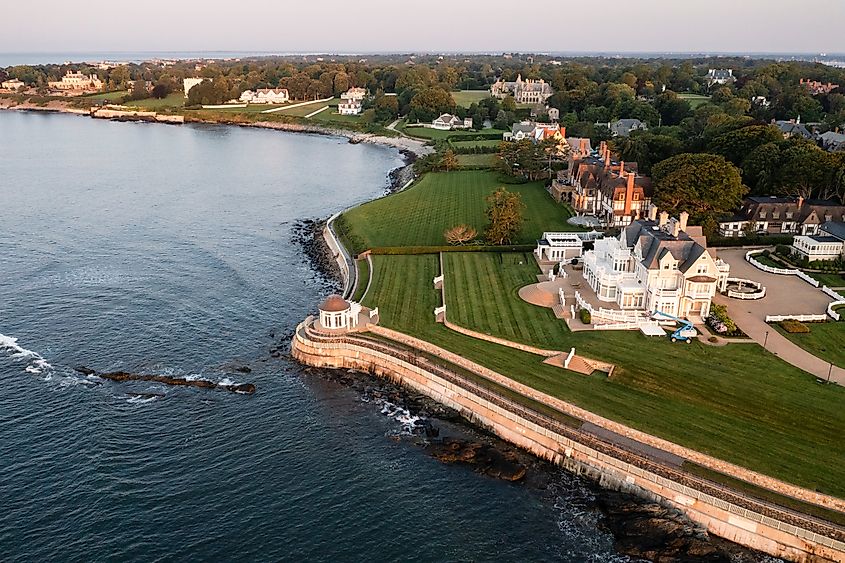
Where did the 1% vacation two centuries ago? For many, the answer was Newport, Rhode Island. The town started as a colonial port and then became synonymous with the rich and famous of the 19th century, particularly the Vanderbilts, whose mansion, “The Breakers,” presides over the coast with stately elegance. If one mansion isn’t enough, stroll the Cliff Walk, a 3.5-mile coastal walk that encompasses views of several mansions, including Rough Point, Marble House, Miramar, and more. Many of these mansions are now museums that people can visit and tour. Afterward, hungry tourists adore sports like White House Tavern and Bar ‘Cino Newport for their delicious sandwiches, drinks, and ambiance.
Salem, Massachusetts
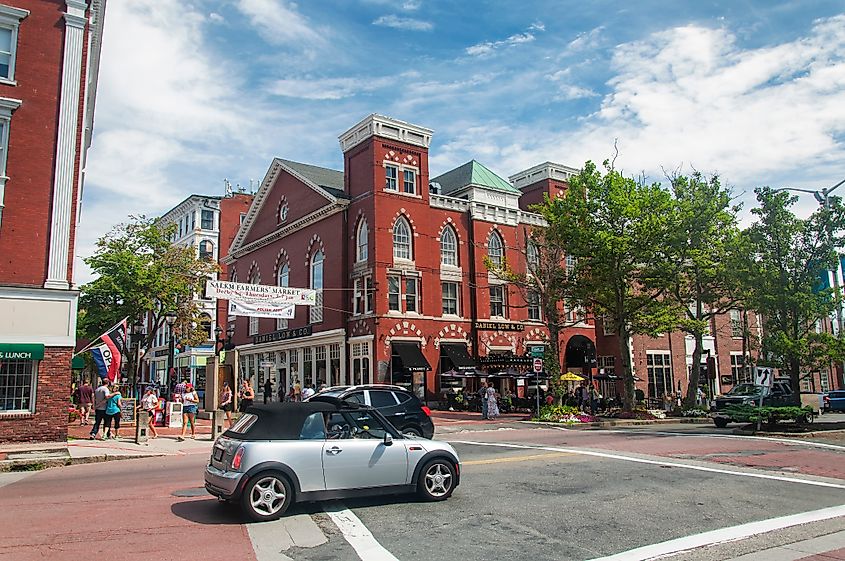
Moving up the coast a bit, Salem, Massachusetts, has some of the spookiest history among the towns on this list. On the map for the 1692 Salem witch trials, this small town has embraced all things witchy since. Stop one should absolutely be the Salem Witch Museum, which chronicles the history of the trials as well as artifacts from contemporary witchcraft practice. Also in Salem is the House of the Seven Gables, made famous by Nathaniel Hawthorne’s eponymous novel; it sits on the water and can be toured. For a different take on local tales, explore Salem’s maritime history by visiting the Salem Maritime National Historic Site, which documents the town’s time as a colonial port- not to mention features a tall ship.
Portsmouth, New Hampshire
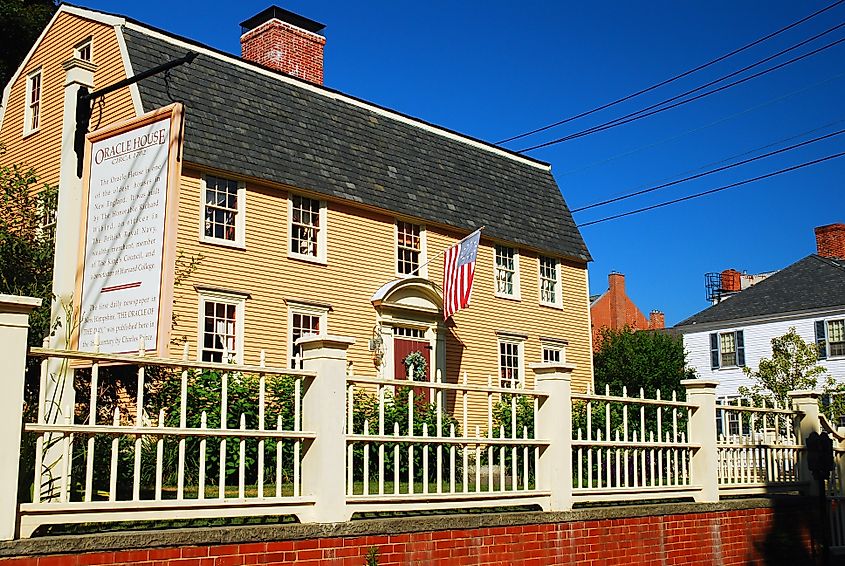
Portsmouth, New Hampshire, bounded by the Atlantic Ocean and I-95, is one of the oldest towns in the U.S., founded in the 1600s. Portsmouth was a working port connecting towns further inland via the Piscataqua River. Those interested in uncovering this town’s past head straight to the local living history museum, the Strawbery Banke Museum, which sports 10 acres of paid docents demonstrating various aspects of Portsmouth’s history. Also worth touring is the 1700s mansion Langdon House and the Portsmouth Historical Society. You can also visit the decommissioned submarine USS Albacore and tour its inside to learn more about submarines and naval history. End the day at Prescott Park for a scenic stroll along the beautiful Atlantic waters.
Mystic, Connecticut
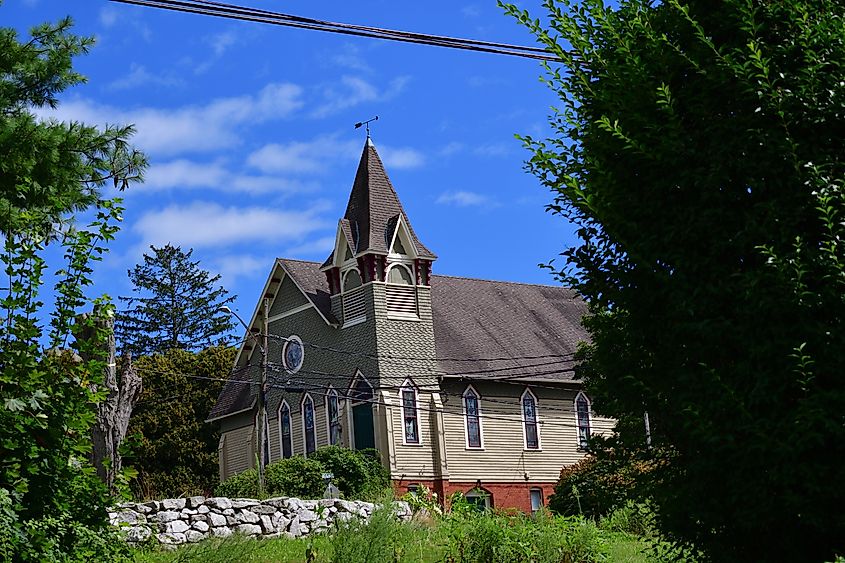
Mystic, Connecticut, is a picturesque seafaring town that truly lives its history. Home to the Mystic Seaport Museum, the nation’s largest maritime museum with multiple historic tall ships, one can wander a recreated 19th-century seafaring village and learn about the crafts supporting maritime endeavors, like smithing, barrel making, and even using a printing press. Stop by the Mystic Aquarium to learn about the local wildlife of the ocean, with over 300 different species, from the friendly beluga whale to the intelligent giant Pacific octopus. To see some larger animals, one can take part in aquarium-organized whale-watching tours when the season is right. Toast your trip at the Captain Daniel Packer Inne, a cramped 18th-century tavern that brings the inns of the colonial era alive, one tankard of beer at a time.
Beaufort, North Carolina
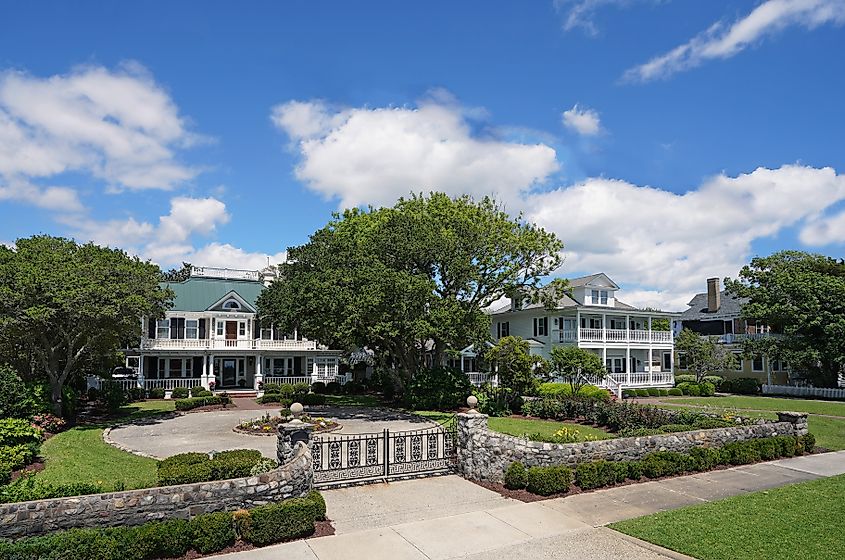
Beaufort, North Carolina (that’s bow-fort, unlike its South Carolina counterpart) is one of North Carolina’s oldest towns. Close to the southern end of the Outer Banks, Beaufort has a rich history in maritime trade and, compellingly, piracy. Visit the North Carolina Maritime Museum to learn about local celebrity Blackbeard as well as other interesting points of Maritime history. Stop by the Old Burying Ground, an old cemetery dating back to the early 18th century, to see gravestones of Revolutionary and Civil War soldiers, among others. Wander the historic district to see well-preserved 18th and 19th-century homes and really channel the spirit of the early 1700s. Some landmarks like the 1851 Gibbs House and 1794 Jacob Henry House stand out, with intricate Greek Revival and Federal architecture on display.
After taking in the past, visitors can enjoy Beafort’s present with one of the many local events. Whether this is the Beaufort Music Festival in May or the Beaufort Wine and Food Festival in November, the possibilities are endless. The town even hosts a fishing tournament each year to find the best anglers in the region.
Lewes, Delaware
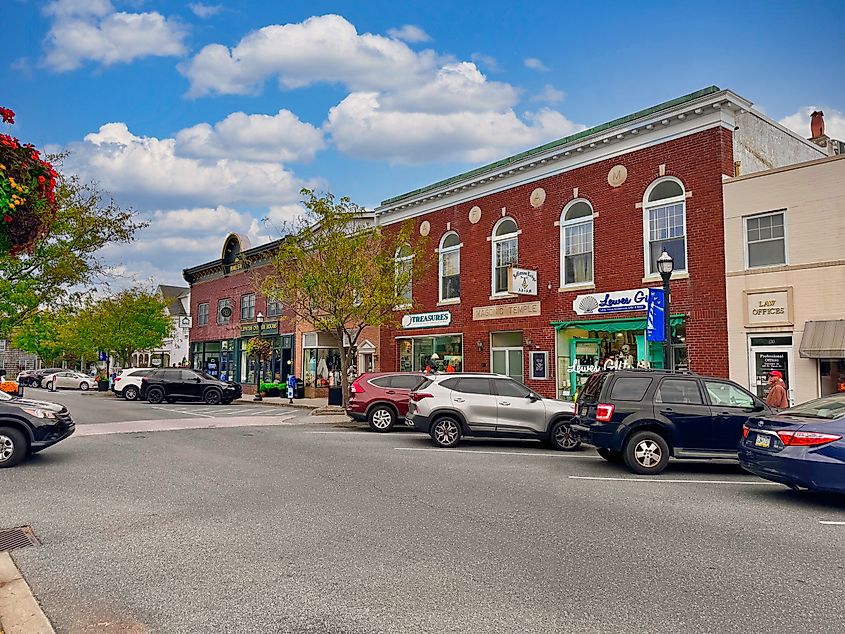
Founded in 1631, Lewes, Delaware, known as the “First Town in the First State,” has no shortage of history. Initially settled by the Dutch, Lewes is a great gateway to learning about this aspect of colonial history: check out the Zwaanendael Museum, housed in a Dutch city hall replica for deep historical context. Tour the Lewes Historical Society Complex, which works to preserve old buildings and artifacts, learn more about the town’s colonial history, and tour several restored buildings. Finally, visit a WWII-era fort (Fort Miles) in Cape Henlopen State Park for a mix of history and nature. This 1940s fort is full of military tales, and with the added view of Atlantic waters, it is a sight anyone will love.
Conclusion
The Atlantic coast is a treasure trove of American history, with each town offering a distinct glimpse into the nation's past. From the ancient streets of St. Augustine to the storied mansions of Newport and the maritime legacies of Portsmouth, these small towns beautifully preserve the layers of history that shaped the United States. For any history enthusiast, these coastal gems provide an unforgettable journey through America's rich heritage via wonderful landmarks and tales.











